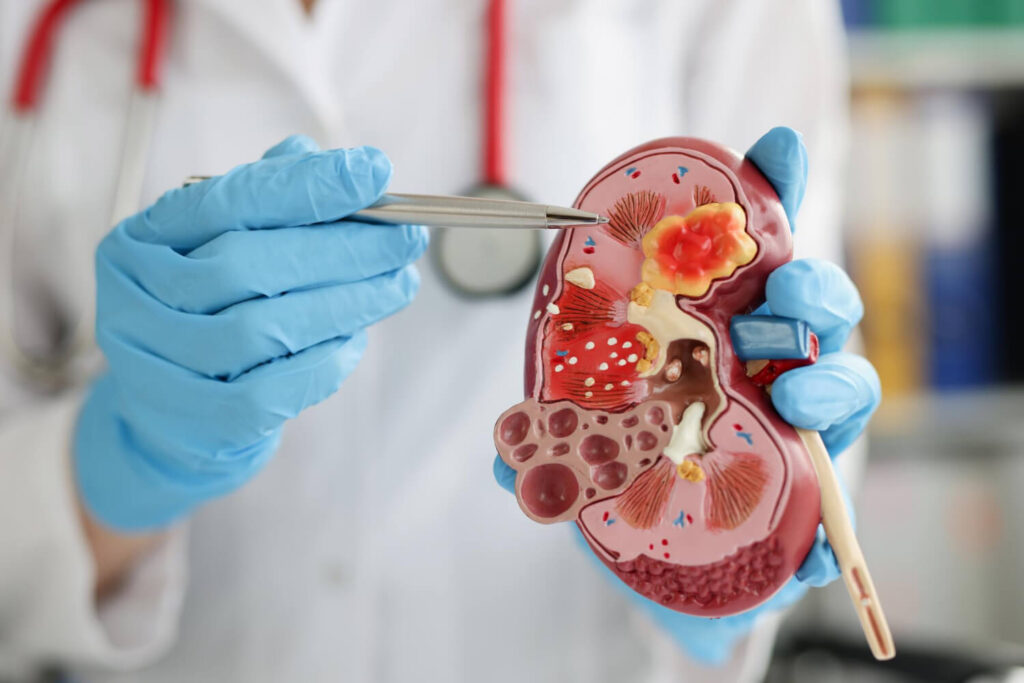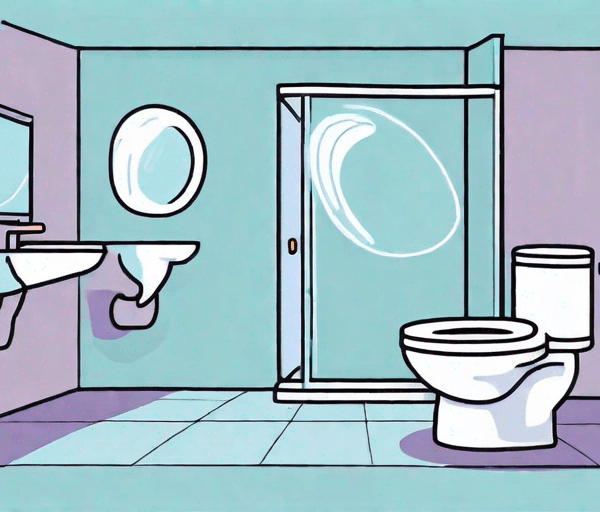Kidney stone surgery is a procedure for cases involving stones that can be only removed through surgical intervention. This process is necessary, especially if initial treatment options fail.
Get to know its aspects and understand why some cases need this kind of intervention. This guide will cover the types of surgeries and their involved risks. Let’s begin!
Understanding Kidney Stones

Kidney stones, also known as renal calculi, are hard deposits that form in the kidneys. They are comprised of minerals and salts that accumulate over time. The size of kidney stones can range from a small grain of sand to a golf ball size. Such material can cause blockages in the urinary tract, leading to pain and other complications.
Understanding the formation of kidney stones is crucial in preventing their occurrence. These stones typically develop when certain substances in the urine, such as calcium, oxalate, and uric acid, become highly concentrated. When the concentration surpasses the ability of the urine to dilute them, these substances can crystallize and form solid masses.
Various factors can contribute to the formation of kidney stones. Dehydration, for example, can lead to concentrated urine, increasing the risk of stone formation. Additionally, certain medical conditions, such as urinary tract infections and metabolic disorders, can promote the development of kidney stones.
Common Symptoms of Kidney Stones
When kidney stones start to cause symptoms, it is important to seek medical attention. The symptoms can vary from mild to severe and may include:
- intense pain in the back or side
- blood in the urine
- frequent urination
- cloudy or foul-smelling urine
- nausea and vomiting
It is worth noting that the location of the kidney stone within the urinary tract can also influence the symptoms experienced. For instance, if a stone gets lodged in the ureter, the narrow tube connecting the kidney to the bladder, it can cause excruciating pain known as renal colic. This pain typically radiates from the back to the lower abdomen and groin area.
The severity of the symptoms does not always correlate with the size of the kidney stone. Even small stones can cause significant discomfort, while larger stones may remain asymptomatic for extended periods. That’s why it is best to consult to a specialist to better understand the possible steps for those scenarios.
When is Surgery Necessary for Kidney Stones?

Removing kidney stones is an elaborate process that needs to be checked. Several procedures are available just to attain this goal. However, choosing kidney stone surgery as the method may require determinants. Let’s explore some factors that play a role in determining whether surgery is the best option.
Size and Location of Kidney Stones
The size and location of kidney stones are crucial factors in deciding whether surgery is necessary. If the stones are too large to pass, it can cause significant blockages. In such cases, surgical intervention may be the most effective way to remove the stones and alleviate the associated symptoms.
It’s important to note that the size and location of kidney stones can vary greatly among individuals. Some stones may be small enough to pass on their own, while others may require medical intervention. That’s why careful evaluation by the expert is a must for selecting the best course of action.
Persistent Pain and Kidney Stones
Another factor is the constant excruciating pain. If the pain persists and cannot be relieved by other treatments, surgery may be considered. Through undergoing kidney stone surgery, it can effectively alleviate the pain. Plus, it is an immediate intervention, especially for cases like this.
Kidney Function and Stones
Preserving kidney function is of utmost importance when dealing with kidney stones. If the stones are causing kidney damage or if there is an increased risk of infection, surgical intervention may be recommended to prevent further complications. By removing the stones and addressing any underlying issues, surgery can help restore and maintain proper kidney function.
It’s worth noting that surgery is not always the first line of treatment for kidney stones. In many cases, less invasive approaches, such as medication, lifestyle changes, or non-surgical procedures like extracorporeal shock wave lithotripsy (ESWL) or ureteroscopy, may be attempted first. However, if these methods prove ineffective or if the stones pose a significant risk to the patient’s health, surgery may be the best course of action.
Ultimately, the decision to undergo surgery for kidney stones is a complex one that should be made in consultation with a healthcare professional. They will carefully evaluate your specific circumstances, taking into account factors such as stone size, location, persistent pain, and kidney function, to determine the most appropriate treatment plan for you.
Types of Kidney Stone Surgeries
Kidney stones can cause severe pain and discomfort, and in some cases, they may need to be treated with surgery. There are several different types of kidney stone surgeries, each with its own benefits and considerations. Let’s take a closer look at three common procedures: Extracorporeal Shock Wave Lithotripsy (ESWL), Percutaneous Nephrolithotomy (PCNL), and Ureteroscopy (URS).
Extracorporeal Shock Wave Lithotripsy (ESWL)
ESWL is a commonly performed procedure for kidney stones. It involves using shock waves to break the stones into smaller fragments, making them easier to pass through the urinary tract. This non-invasive procedure does not require any incisions and is usually performed on an outpatient basis.
During ESWL, the patient lies on a table, and a machine called a lithotripter delivers shock waves to the targeted area. These shock waves pass through the body and break the kidney stones into smaller pieces. The patient may experience some discomfort during the procedure, but anesthesia or sedation can be used to minimize any pain.
After ESWL, the patient may need to pass the stone fragments through their urine. This can cause some temporary discomfort, but it is a sign that the procedure was successful in breaking down the stones. Drinking plenty of fluids and taking pain medication as prescribed can help manage any discomfort during this time.
Percutaneous Nephrolithotomy (PCNL)
PCNL is a surgical procedure in which a small incision is made in the back to access the kidney. A nephroscope, a thin tube with a camera and surgical instruments, is then inserted through the incision to remove or break down the stones. This procedure is often recommended for larger stones or those that are difficult to reach with other methods.
During PCNL, the patient is placed under general anesthesia to ensure they are comfortable and unaware during the procedure. The surgeon makes a small incision in the back and creates a tract to reach the kidney. The nephroscope is then inserted, allowing the surgeon to visualize the stones and perform the necessary interventions.
PCNL is an effective procedure for removing large stones or stones that are causing significant symptoms. After the surgery, the patient may need to stay in the hospital for a few days to recover. Pain medication and antibiotics may be prescribed to manage any discomfort and prevent infection.
Ureteroscopy (URS)
URS is a minimally invasive procedure that involves inserting a thin tube called a ureteroscope into the ureter. The stones are then either removed or broken down using laser energy. URS is commonly used for stones located in the ureter or lower in the urinary tract.
During URS, the patient is typically given general anesthesia or sedation to ensure their comfort. The ureteroscope is inserted through the urethra and guided up into the urinary tract. The surgeon can then visualize the stones and use laser energy to break them into smaller pieces or remove them entirely.
URS is a highly effective procedure for treating kidney stones, particularly those that are smaller in size. It is considered minimally invasive because it does not require any incisions, resulting in less pain and a faster recovery time. After the procedure, the patient may experience some discomfort, but this can usually be managed with pain medication and by drinking plenty of fluids to flush out any stone fragments.
It is important to note that the choice of surgery depends on various factors, including the size and location of the stones, the patient’s overall health, and the surgeon’s expertise. Consulting with a urologist is crucial to determine the most appropriate treatment option for kidney stones.
Risks and Benefits of Kidney Stone Surgery

Potential Complications of Surgery
As with any surgical procedure, there are potential risks and complications associated with kidney stone surgery. These may include infection, bleeding, damage to surrounding organs, and anesthesia-related complications. It is important to discuss these risks with your healthcare provider before undergoing surgery.
Success Rate of Kidney Stone Surgery
Kidney stone surgeries have a high success rate in removing or treating stones. The specific success rate may vary depending on the type and size of the stones, as well as the patient’s overall health. However, it is important to note that surgery may not completely prevent the recurrence of kidney stones, and lifestyle modifications may still be necessary to reduce the risk.
Final Takeaway
Understanding the basics of kidney stones, its risks, and possible treatment is important when it comes to surgical intervention. This procedure can be the less priority, but if symptoms show signifying factors, surgery is the best option.
This immediate procedure is not considered all the time as there are non-surgical approaches that can work. However, if certain situations happen, the doctor will need to perform the kidney stone procedure to avoid further risk and damage.
Consult with a healthcare professional to determine the most suitable course of action based on individual circumstances.



